Coaching Cues to Maximize Jump Height & Distance
By: Adam Feit
Do you remember that “a-ha” moment?
You were learning a new movement, but lost. Confused. Nothing seemed to click. It seemed like your coach just rambled.
Then, he said something exactly right. The right thing, in the right way.
Then you were like, “BOOM. Now I get it!”
That’s the power of coaching cues.
Coaching cues remind us to do something specific. They’re active instructional processes.
Coaching cues matter.
Whether it’s the “hips back” command during a deadlift, or “chest up” cue during a squat, coaches help create correct movement patterns by carefully delivering their words.
Coaches — real people — matter too.
State of the art facilities and revolutionary sports performance technology can’t replace a coach’s experienced voice and eye, nor a coach’s wisdom.
But what about those moments where it seems nothing you say clicks with your athletes?
Maybe you’re reciting how you understand it.
Or you’re reading verbatim from a textbook.
Maybe you’re having trouble translating it into their “language”.
Whatever the reason:
One crucial piece of communication is missing: meeting your athletes where they’re at.
As a sports performance and nutrition coach, I work with athletes of all levels. I see every spectrum of desire and commitment from middle school all stars to NFL MVP’s.
So I have to adapt my message and delivery for each unique client. It doesn’t matter if they’re making millions or swapping lunches.
Every level of athlete needs a different form of customized cueing.
From the pre-contemplation to realization stages, we have to be with them every step of the way.
Not only do athletes develop differently, they learn and communicate differently.
Watch your athletes and you’ll start to notice that each one processes information in unique ways.
- Maybe they’re the kid that needs to learn by doing. They grab, touch, move around, play with stuff.
- They could be the kid that drives you nuts asking questions. Why are we doing it like this? They want to know the ideas and the reasons for things.
- You also have your problem solvers and calculators. Numbers people. Logic puzzlers. They want to know about angles and trajectories and equations.
- Maybe they’re the socializers. The team leaders and collaborators. They depend on their groups and tribes to learn. (And why won’t they stop talking?)
You’ve also probably noticed that teaching to one type doesn’t help another type.
You can’t just tell a “learn by doing” athlete verbally to jump higher or farther or show them a diagram of approach angles. Or draw a stick-figure diagram for a “logical-mathematical” athlete doing lateral bounds.
But when you figure out how to reach that athlete… and communicate in the way they need and want… it’s magic.
Their heads nod. They get it.
And they do it — in training, and when it matters most: under pressure, in competition.
They understand how to position themselves. How to self-correct. How to keep learning.
So before we get into higher verticals and farther long jumps, we have to ask ourselves one thing.
Are our athletes even in the right position?
When it comes to jump training, we look at three key parts of body position:.
- Chest.
- Hips
- Knees.
The athlete needs to align and coordinate these areas for proper posture, and to translate their speed and power.
For instance:
- Chest position: Are they jumping or landing while leaning too far forward?
- Hip extension: Are they fully extending their hips? Are they getting triple extension — power blasting out of ankles, knees, hips as a coordinated chain?
- Knee alignment: Are they keeping their knees behind their toes? Do they keep their knees from caving in?
For a step by step jump training system,
check out Complete Jumps Training.
Once we know what we’re looking for, we can find the best way to match our coaching cues to our athletes.
A good coach knows how to cue in all kinds of ways, for all kinds of athletes.
For instance, analogies and metaphors are powerful language tools that can transform your athlete.
- Zero to hero.
- Bust to must.
- Never to need.
But which ones do you use?
Internal coaching cues ask the athlete to focus on what is happening in their movements.
Internal cues use the relative landmarks of the body — how parts relate to other parts.
For instance:
- Snap the hips through.
- Extend your ankles down and up.
- Slam your arms back.
External coaching cues use actions and areas of the environment around the athlete.
This helps the athlete understand how their motion relates to the desired result.
For instance:
- Reach the sky.
- Bounce off the ground.
- Snap your arms behind your pockets.
Once we know which types of coaching cues to use, for what movements, and why, we think about how to translate those cues for a given athlete.
Sure, ‘Reach the sky’ sounds good, but how can we tailor that for
- a high school basketball player?
- a college volleyball player?
- a base stealing baseball player?
Answer: Meet them where they’re at.
By using proper sport-specific terms for each athlete, we can flip a switch… and leave it on for good.
For example:
Try telling a basketball player to slam. It will remind him to triple-extend to reach the rim and dunk the ball with authority (or get up onto that 50 inch box).
Try telling your volleyball player to spike. It will ensure she gets up high and fast to deliver that final point over the net (or reach that last piece on the Vertec).
Remind your big-leaguer that there is a base coming up. It will prompt him to stretch a bit longer to steal that base in the bottom of the 9th (or max long jump).
Understand how your unique and individual athletes respond.
Watch them. Test different methods of communicating and teaching. Connect the cue with the outcome. Adjust as needed.
Maximize their internal and external focus for optimal jump performance. And if you’re interested in learning more, check out our DVD and programming manual!
Sources
NSCA Hot Topic: What We Say Matters (Part 1). Nick Winkleman (https://www.nsca.com/
Precision Nutrition Level 2 Certification Course: Finding Your Superpowers (Week 9).
About the Author:
Coach Adam Feit is the former Director of Sports Performance at Reach Your Potential Training. Coach Feit previously coached at the Olympic, Division I, and NFL levels. A former All American offensive lineman for Springfield College, Adam is a certified nutrition coach and NSCA/CSCCa certified strength and conditioning coach and is the creator of Complete Jumps Training. If you are looking for a Jump Training System, then go checkout the details on Complete Jumps Training here.

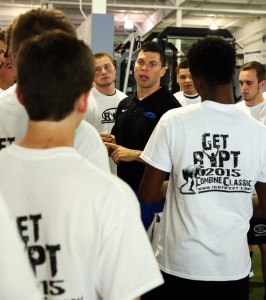
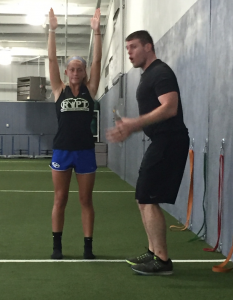

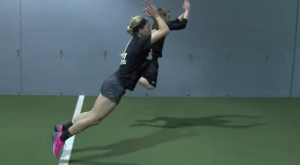

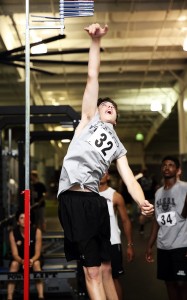
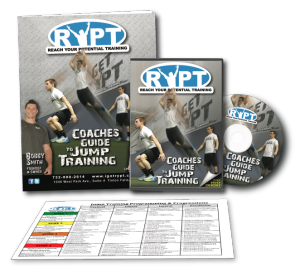
0 Comments for “Coaching Cues to Maximize Jump Height and Distance”